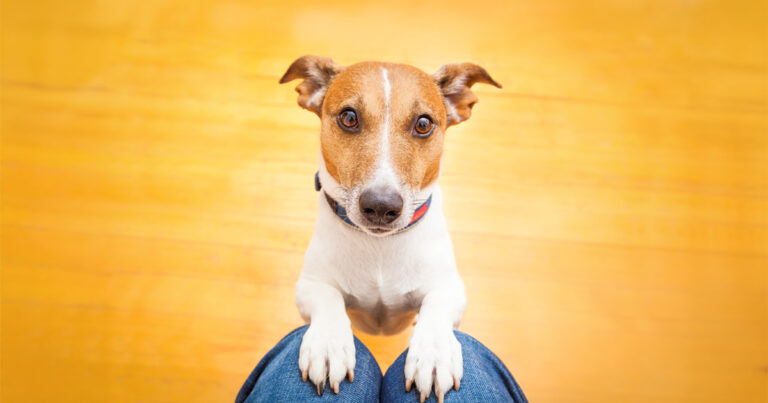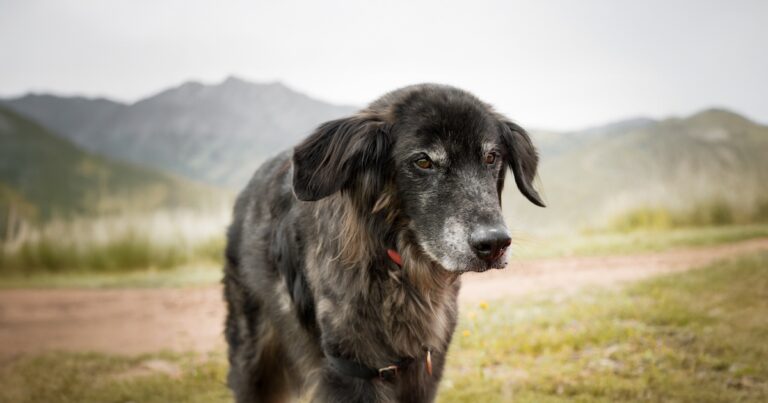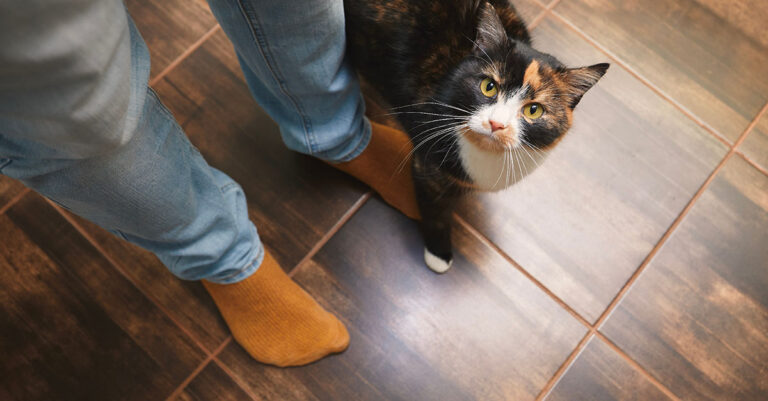When a friend visits your house, your dog should feel comfortable enough to greet them in a friendly manner, or at least feel indifferent about their arrival. But that’s not the reality for some cautious canines. For dogs who are afraid of people, a visitor dropping by can stir up their “stranger danger” senses, causing fear and anxiety to set in.
It’s important to realize that a severe fear of people can lead to aggressive behaviors and potential bites from dogs. So if your dog is showing aggressive behaviors when meeting people, consult your veterinarian, an animal behaviorist or a certified professional trainer. They can help you determine the best way to manage your dog’s fear and aggression.
If your dog is displaying anxiety or mild fear behaviors when meeting people, positive reinforcement training could be beneficial. They may not become best buds with everyone they meet, but hopefully their “stranger danger” reaction diminishes and they become less anxious and fearful about meeting new people.
Signs That Your Dog Is Afraid of People
Some of the signs that your dog is scared of people are pretty obvious, like when they hide behind you with their tail tucked between their legs. Other signs might not be quite as obvious, like yawning, avoiding eye contact and lip licking.
If your dog has become scared enough that they feel the need to defend themselves, they may bark or growl, raise their hackles, stand tall and strain forward or have a stiff tall tail arched over their back.
It’s important that your recognize these signs so that you can remove your dog from the fearful situation before it escalates.
Why Are Dogs Scared of People?
There are a few things that could lead to your dog trembling when they meet unfamiliar people. If you adopted a rescue dog, it’s possible that their fear of people is due to abuse in their previous life. You can find more information about recognizing the signs of abuse in dogs in our blog “Rescue Me: How to Care for a Formerly Abused Rescue.”
A one-off traumatic event could also trigger a fear response if they experience a similar situation again. For example, if someone on a bicycle ran into them, they might be afraid of all people riding bicycles.
There can also be a genetic component as to why some dogs are more fearful than others, but the most common reason dogs are scared of people is due to poor socialization as a puppy. According to the American Veterinary Society of Animal Behavior, the first three months of life is the most effective time to introduce puppies to people, animals and experiences, because a puppy’s sociability outweighs their fear during this time.
If you have a puppy, introducing them to people shouldn’t be limited to just your circle of friends and family. They need to get out and about and meet a variety of people during those first few months so that when they come across a variety of people later in life, they know what to expect.
Some examples of who to introduce a puppy to include babies (happy and crying), kids, seniors, delivery people, people wearing accessories (e.g., hat, sunglasses, winter coat, face coverings) and people using equipment (e.g., umbrella, walking aids, sporting equipment, baby strollers).
CDS Can Change a Senior Dog’s Perception of People
If you have an older dog who used to be friendly toward everyone but is now grumpy and doesn’t want to socialize with people, they may have cognitive dysfunction syndrome (CDS). Signs of CDS in dogs are:
- Disorientation or confusion (staring into space or getting lost in corners)
- Acting less social or seeking more attention
- Increased potty accidents
- Changes in sleep-wake cycles (restless, pacing, whining at night)
- Changes in anxiety or irritability
- Increased or decreased activity
Senior dogs with CDS show gradual cognitive decline and signs of memory and learning impairment. There is no cure for CDS, but interventions are available to help delay its progress and make your dog feel more comfortable.
Help Your Dog Feel More Secure Around People
The best way to help your dog become comfortable around strangers is to start acclimating them to people from a distance. That way they can get used to being around people without becoming uncomfortable or fearful by people approaching them. Use lots of praise and positive reinforcement when they’re being calm and not showing fearful behaviors.
As your dog becomes more comfortable around people at a distance, you can try moving closer. Keep their attention on you and continue the rewards and praise. Ideally you want them to remain focused on you and to ignore anyone walking nearby. If your dog becomes overwhelmed, stop the training and try again another day.
You shouldn’t force your dog to interact with people because this can make the situation worse. It could make your dog go from fearful to defensive, resulting in aggressive behavior like biting. If your dog does growl or bark at someone, don’t punish their behavior. It may cause them to hide their early warning signs of aggression and lead to biting before you realize there’s a problem.
If someone visits your home, ask them to ignore your dog, including avoiding eye contact with them. You may want to keep your dog on their leash during the visit. To help show your dog that visitors are a positive experience, you can ask your friend to toss them a treat or a toy. If your dog is brave enough to approach the visitor, ask your friend to keep avoiding eye contact and try not to make sudden movements that might startle your dog. Reward your dog’s behavior if they continue signs of being comfortable and calm around your visitor.
Helping your dog overcome their fear of people could take many weeks or months. The goal is to help them feel more comfortable around people and reduce the risk of defensive or aggressive behaviors that create dangerous situations. If you’re concerned about your dog’s behavior, make sure you contact your veterinarian or an animal behaviorist for advice.
RELATED POST: Untraining Your Pet: Breaking Away From Walk Anxiety







